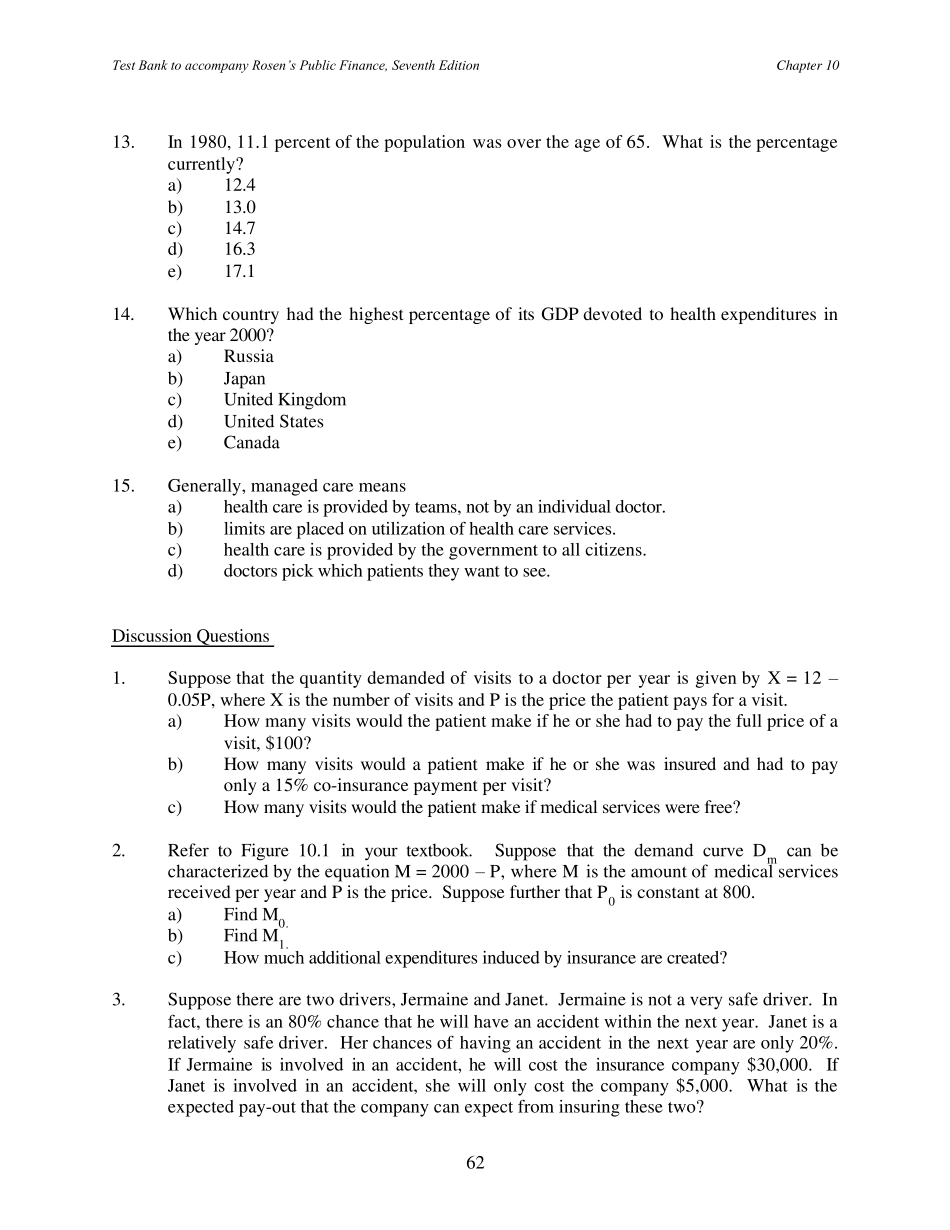Test Bank to accompany Rosen’s Public Finance, Seventh Edition Chapter 10 60 CHAPTER 10 – Social Insu rance II: Health Care Multiple-Choice Questions 1. When the average buyer of an insurance policy is likely to have higher risk than others in his class, this is known as a) adverse selection. b) moral hazard. c) asymmetric information. d) a HMO. e) none of the above. 2. There are two forms of health care provided by the government: _________ is provided for the poor, and _________ is provided for the elderly. a) HMO; Medicare b) PMI; HMO c) Medicaid; Medicare d) Medicare; Medicaid e) SSI; Medicare 3. In the year 2000, what was the percentage of GDP that was expended, in total, on health care? a) 0.132% b) 12% c) 13.2% d) 19% e) 22% 4. __________ account(s) for the largest portion of public health expenditure in the United States. a) Children’s hospitals b) Universal health coverage c) Medicaid d) Medicare e) Workers’ compensation 5. Health care markets may be inefficient because of a) poor information. b) adverse selection. c) moral hazard. d) all of the above. e) none of the above. Test Bank to accompany Rosen’s Public Finance, Seventh Edition Chapter 10 61 6. The __________ level of government accounts for the largest share of health care spending. a) regional b) state c) municipal d) federal 7. In the year 2002, how much money, in billions of dollars, did the federal government spend on Medicare? a) 13 b) 253.7 c) 265.9 d) 301 8. If some percentage of a doctor visit must be paid by the patient, even if she has insurance, this is known as a) an HMO. b) a cost reimbursement strategy. c) DMI. d) a down payment. e) a co-payment. 9. Most private insurance is provided ...


